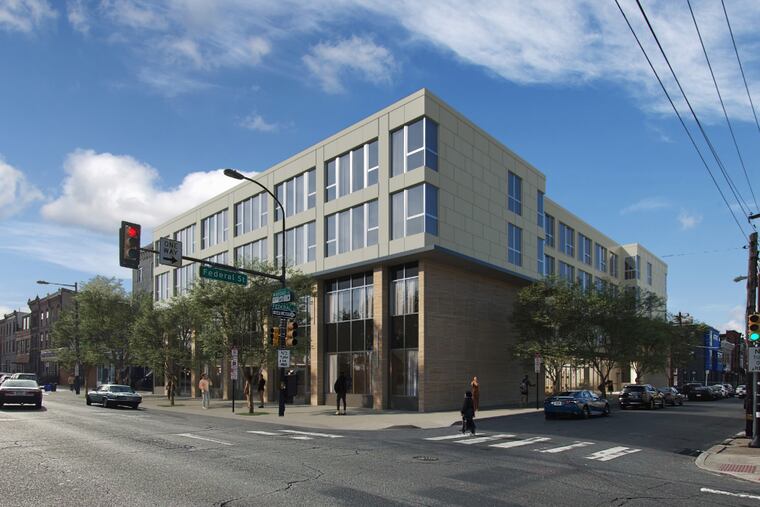Historical Commission approves 53 apartments above PEP Bowl in South Philly
But a 33-unit apartment building in Germantown before the Historical Commission faced more pushback.

The Philadelphia Historical Commission gave its seal of approval to a lightly updated 53-unit apartment proposal above the 1200 S. Broad St. site of Programs Employing People (PEP) and its beloved neighborhood bowling alley.
PEP provides programming and counseling for people with physical or developmental disabilities and has operated out of the two-story modernist structure for almost three decades. But in recent years, as it provided more of its services outside the building, its spatial needs have contracted, and repair costs have mounted in the increasingly vacant structure.
Developer Spring Hill Services’ proposal for the property would keep the nonprofit and its publicly accessible bowling alley, which is a community fixture, on-site while adding housing and a two-story addition above the older building.
Spring Hill was the only developer who bid on the project whose plans did not include demolishing the structure and relocating PEP. The nonprofit’s leadership beseeched the commission to allow the project to move forward.
“We’re the only organization like this from Arch [Street] down to Oregon [Avenue], river to river,” said Michael Tucker, executive director of PEP. “We’re doing a 50-year lease with them to stay where we are. We serve thousands of people with developmental disabilities.”
The project’s architects updated the building materials of the two-story addition, with sandstone-colored metal panels added to echo the limestone below. Elements of design that would cast shadows along Broad and Carlisle Streets were removed, and windows were enlarged.
The property was nominated for historical designation last year by the Preservation Alliance of Greater Philadelphia, but the advocacy group made clear that they did not want their action to impair Spring Hill’s plans. They advocated that the Historical Commission consider the case with maximum flexibility.
That’s what the commission did Friday morning, voting unanimously to approve the project.
Although the commission’s staff had originally recommended denial of the proposal, executive director John Farnham explained that they no longer felt that way. They had not known all the facts of the case at that time.
“The staff’s initial recommendation of denial was prepared without full knowledge of the background here in terms of the fact that this project was well underway,” Farnham said, “and without information about the owner of the property and its social service mission. … The staff would not have flatly recommended denial had we known all of that.”
The commission was less accommodating of a 33-unit apartment proposal for a surface parking lot in Germantown, which is included in a proposed historic district.
The developer, Olympia Holdings, has experienced strong neighborhood backlash to an earlier apartment proposal and argued that the new historic regulation of an asphalt lot could be explained as a different way to undermine his proposal, which is legal under the existing zoning.
“We don’t understand for what reason we have been literally chased by [the] RCO for any project that we attempt to develop in Germantown,” said Eli Kantrovitz, one of the developers with Olympia.
The project was updated to add brick detailing and to make the ground-floor commercial space more visually comparable with its surroundings. But community comment was still uniformly negative.
Some testimony centered on the project’s purported negative effect on shadows and density on the block, which are outside the commission’s purview. Others focused on the failure to respect the historic surroundings — which include the Deshler-Morris House, where George Washington once resided.
“Every individual who would come to Philadelphia and want to see where George Washington’s summer White House was would be influenced by the magnitude of this proposed development,” said Greg Paulmier, a longtime neighborhood advocate.
The commission decided to send the case back to the architectural committee in part so the developer could provide renderings that better demonstrated the building in its context.